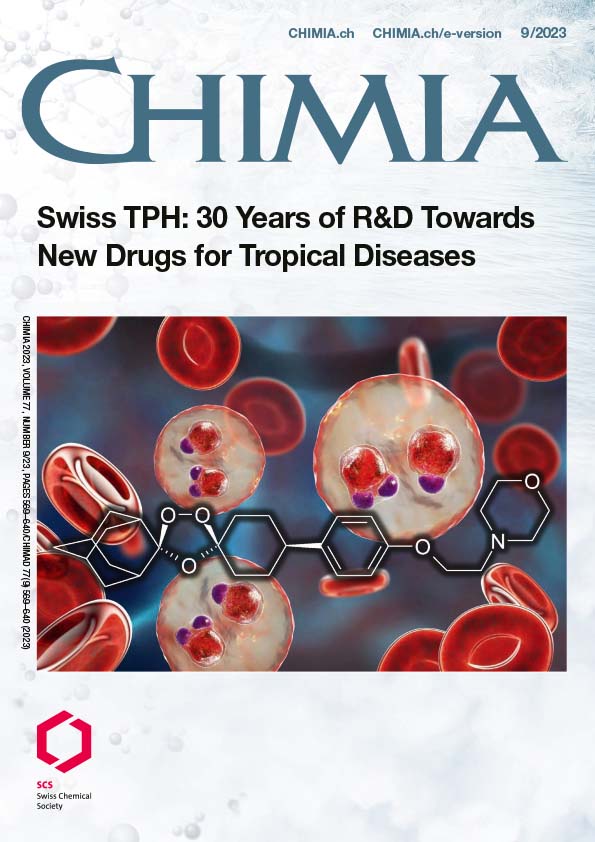Repurposing of Tuberculosis Drug Candidates for the Treatment of Mycobacterium ulcerans Disease
DOI:
https://doi.org/10.2533/chimia.2023.577PMID:
38047833Keywords:
Buruli ulcer, Drug repurposing, Mycobacterium ulcerans, Q203, TelacebecAbstract
Buruli ulcer (BU) is a chronic necrotizing skin disease caused by Mycobacterium ulcerans. Historically, the disease was treated by surgical excision of the skin lesions, until an 8-week combination therapy of rifampicin and streptomycin was introduced in 2004. This treatment modality was effective and reduced recurrence rates. Rifampicin is the most efficacious antibiotic for the treatment of BU and, should rifampicin-resistant M. ulcerans strains emerge, there is currently no replacement for it. As for mycobacterial diseases in general, there is a pressing need for the development of novel, fast-acting drugs. Under market economy conditions, repurposing of new tuberculosis drug candidates is the most promising avenue for alternative BU treatments. Our drug repurposing activities have led to the identification of several actives against M. ulcerans. In particular, the cytochrome bc1 complex inhibitor telacebec (Q203) is a promising drug candidate for the treatment of BU in Africa and Australia. While an active cytochrome-bd oxidase bypass limits the potency of the cytochrome-bc1-specific inhibitor telacebec against M. tuberculosis, classical lineage M. ulcerans strains rely exclusively on cytochrome-bc1 to respire. Hence, telacebec is effective at nanomolar concentration against M. ulcerans, and a high treatment efficacy in an experimental mouse infection model indicates that treatment of BU could be substantially shortened and simplified by telacebec.
Funding data
Downloads
Published
How to Cite
Issue
Section
License
Copyright (c) 2023 Louisa Warryn, Gerd Pluschke

This work is licensed under a Creative Commons Attribution 4.0 International License.







